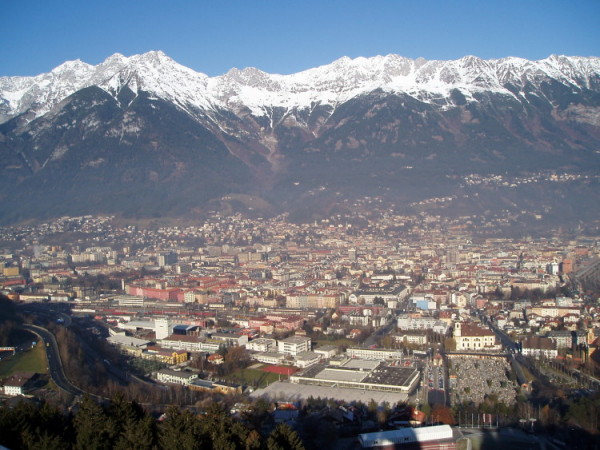Innsbruck, Austria

|
In early December 2005 we drove to Innsbruck in Austria whilst staying in Munich, Germany. Being a ski-resort, there are inevitably wonderful views as you can see here. The first documented mention of Innsbruck dates back to 1187 ("Insprucke"). It served as an important crossing point over the river Inn. The city's seal and coat of arms show a bird's-eye view of the Inn bridge, a design used since 1267. The route over the Brenner Pass was then a major transport and communications link between the north and the south, and the easiest route across the Alps. The revenues generated by serving as a transit station caused the city to flourish. Innsbruck became the capital of all Tyrol in 1429 and later in 15th century the city became a centre of European politics and culture as emperor Maximilian I moved the imperial court to Innsbruck in the 1490s. |
| During the Napoleonic wars Tyrol was ceded to Bavaria, ally of France. Andreas Hofer led a Tyrolean peasant army in the victory on the Berg Isel against combined Bavarian and French forces, proceeded to make Innsbruck the centre of his administration. The combined army later overran the Tyrolean militia army and Innsbruck was until 1814 part of Bavaria. After the Vienna Congress Austrian rule returned. The Tyrolean hero Andreas Hofer was executed in Mantua and his remains were returned to Innsbruck in 1823 and interred in the Franciscan church. | |